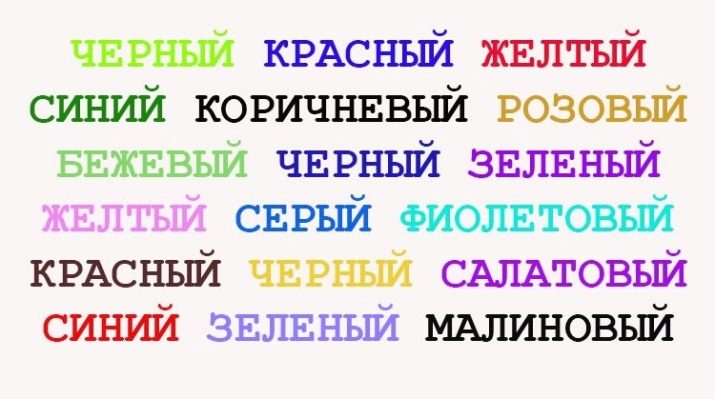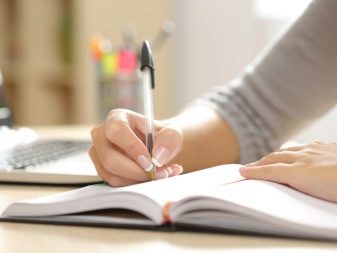How to learn to read quickly?

Reading is the greatest ability, a complex psychological process, 100% mental work. It may seem easy from the outside, but if you look at how difficult reading lessons are for babies, how hard it is for a person to master the skill after suffering injuries and brain dysfunctions, it becomes clear that this is a lot of work.
The motor, auditory and visual centers of the frontal lobes of the cortex, as well as the speech zones of the dominant hemisphere, are synchronously involved in reading.
Features of the fast reading technique
Reading speed is not just a desirable quality for many people, but also an excellent psychophysiological test. To turn black and white icons into meaningful information, the brain strains, decodes symbols. The more a person reads, the more this process accelerates. For people with fast reading, it takes the smallest fractions of a second, but people with weak reading skills have to pronounce words to themselves.
Knowing that even intellectual games (for example, chess) do not surpass reading in terms of the efficiency of the thought process, I want to read quickly, a lot, literally grasping information on the fly. And this you can really learn.

Reading is a skill that is achieved primarily through practice. And you need to start training him with a simple action: do not say the words to yourself, but just slide your eyes along the lines. At first it seems difficult, it is difficult to follow the meaning, but gradually everything falls into place.
And (there is no getting away from this) fast reading is associated with the quality and quantity of reading. If you open the book once a week, do not expect high results.
Experts give the following tips for training yourself to read a lot:
- read on the transport, in the queue to the doctor, in the bathroom, in the kitchen while the soup is being cooked - so you do not just while away the forced “downtime”, but spend it with benefit;
- phones and computers - the same books, electronic "readers" may not be pleasant visually, by sensations, but the principle of information flow to the brain is still the same;
- do not be lazy to re-read books, return to your favorite works of youth;
- do not rush to master the list of "100 books that everyone should read", this is just a race, the quality of reading during it can suffer greatly;
- be sure to read any poems (but better - good ones), it develops memory, makes the brain work even more intensely and has a psycho-emotional good effect on a person.
In short, the first step to reading quickly is multi-reading. Replace endless surfing of social networks with a good book and you don't turn your brain into an information trash.

Basic techniques
Fast reading is necessary in order so that you do not spend a lot of time on one book, but can read a whole stack of useful and interesting works in a month. And if you still start reading several books in parallel, then, relatively speaking, you will write out a golden card to your brain in an “intellectual simulator”.
There are a lot of speed reading techniques: you can start with whichever you like best. The basic rule is to read every day. You can work with dynamic reading, with diagonal reading - each technique involves a number of simple tricks. They allow you to read the text quickly and with understanding.

Increase your reading pace
The first step is to suppress subvocalization. You may not read the text aloud, but within yourself you still speak it. If you are asked to read a passage of text in 1 minute, you are unlikely to be able to pronounce more than 180 words during that time. But when the speed of perception of literal information increases, then you will not be able to pronounce words quickly, and subvocalization will interfere with learning to speed reading.
How to get rid of the internal pronunciation of the text:
- while reading, simply press your tongue to the palate;
- pinch the tip of the pencil with your teeth;
- put your finger to your lips.
It takes time to master this skill, but watch your reading every day.
The next step is to avoid regressions. This means that you do not have to go back to the read fragments. The easiest way to do this is to slide your finger along the lines (like in first grade). Readers may have special programs that highlight text in color. Over time, you will find that the following text will help your brain fill in the blanks if you missed something on the previous pages.
Improving the concentration of attention also helps to increase the pace of reading. And it trains great too. A simple example: on a sheet of paper, type the names of the colors, but to "confuse" the brain, highlight them with different colors. For example, print the word "red" in blue and the word "white" in orange. And concentration training lies in the fact that you need to name out loud not the word, but the color with which it is printed.
And special applications that develop peripheral vision are also useful in increasing the pace of reading. You only need to train on one line, where words with a letter in the middle highlighted in a certain color appear at different speeds. This is how a person learns to perceive the whole word.

Give up bad habits
Reading is work. It can be enjoyable, exciting, inspiring, loved, but it is still work. Learning to read quickly can only be done with a high concentration on the goal. And the main enemy on this path is the habit of distraction.
What interferes with reading:
- multitasking - if you are reading, then at the same time you do not need to surf social networks, look into instant messengers and be distracted by coffee too often;
- binding the reading ritual to food, for example: of course, you will often pick up a book if you do it in the process of absorbing food, but it is better not to form such associative connections (and it is dangerous for a figure, and the quality of reading suffers);
- poor conditions - insufficient lighting, uncomfortable posture, late hours of the day lead to the fact that your health worsens and this makes you less likely to pick up a book or a "reader";
- lack of pleasant rituals - for a start they are necessary, it can be a burning aroma candle, cozy pajamas, silence in the house.
Will help you and reading diaries. Get yourself a beautiful notebook in which you will be a literary critic.
Write a little about each book you read: impressions, emotions, strong points, your thoughts. It fuels interest in reading and, again, boosts the brain.

Change the way you read
You can preview the material before reading. This will form an idea of the content of the text and even become an assessment - whether to take on the reading. For a preview, try reading the entire first paragraph, the first sentence of each subsequent paragraph, and the last paragraph in its entirety.
How else to change the way you read:
- pay attention to headings, highlighted words and bulleted lists - this does not give a complete understanding of the text, but it structures it well, a plan for reading important points is already formed in your head;
- look for the main words - isolating keywords helps to grasp the essence of the material without being distracted by the details (when studying large amounts of information for an exam or test, this is a very valuable skill);
- skip those parts of the text that you already know;
- connect the ideas of the text with those things that you already know;
- use a highlighter when reading (this refers mainly to educational literature).
Using the highlighted words in the text, you can restore its meaning, main thoughts, and this will be an excellent support when answering the exam.

Tim Ferriss method
Tim Ferriss, the author of How to Work 4 Hours a Week ..., has developed a technique that triples reading speed. And the whole technique, in fact, consists of two defining techniques.
- Pencil. It's simple - while reading, you use a pencil, which helps to follow the text and which also sets the pace. This helps not to jump eyes over the lines, not to return to the read (refusal of regression).
- Not at first. Start each new line in the text not from the first, but at least from the third word. And finish reading the line also three words before it ends. Try to think out the rest of the words using the context, or even better - capture with peripheral vision. Even if at first the meaning will slip away, persistently continue on - the eyes need to adapt to the new reading speed. Over time, understanding will come.
It is noteworthy that the first technique helps to master the second. Untrained readers, Ferriss assures, spend a lot of their reading time in the fields. And they spend 20% of their reading time on a section of the page with zero information.

Exercises
Reading fluently, easily, carefully, keeping the rhythm is a wonderful goal. It is suitable for an adult, but schoolchildren can also try to train the skill.
There are 10 great speed reading exercises.
- Reading with a pointer... The pencil method is basic, so you can't get away from it. And in order not to feel like a schoolboy (if you are not a schoolboy) replace the pencil, for example, with a sushi stick, brush, skewer. This simplest exercise will boost your reading speed.
- "Green dot". In the center of the page with any text, draw a green dot, look at it for 10 minutes. Imagine this point in your mind even before going to bed, even with your eyes closed while lying in bed. And do this concentration on the point every day for 7-10 days. After that, start looking at the text that surrounds the point. You don't need to read the words - you just need to see them.
- Read upside down. Cheerful children's fun perfectly trains the brain and promotes speed reading. Try to read a sentence first, then a paragraph, then two.
- Print any unfamiliar text. Seal its individual places (small, no wider than 1 cm) with colored stickers. Read the text to yourself, reconstructing it in your mind. In the next lesson, glue the larger fragments already.
- Map the text in your mind. To do this, just skim the page, take a look at it. Your brain has already begun to memorize the text.
- Before storming the text, remember everything that you already know on this topic.... The only interesting thing is that which is already comparable with experience, with the available information. Therefore, interest must be awakened by a preliminary assessment of the available knowledge.
- Take any text, draw a wavy line on the page (two bends). You can use a pointer to help your eyes move while reading. When there is a feeling that the eye is able to catch most of the words, the general line can be straightened.
- Read without short words. There are such simulators: the program automatically removes prepositions, pronouns, interjections from the text. And you need to read this text.
- Read texts written backwards... Etyatic ytsket, eynnasipan modaz derepan.
- Read texts that are missing letters. The brain will begin to finish building words, and this also trains speed reading very well. It can also be poetry.


Reading technologies with high retention rates
It's great not only to be able to read a lot and quickly, but also to memorize what you read. And in this matter, you need to understand - training of attention will be the prerogative. This is the key concept of high memorization.
Characteristics of attention factors:
- concentration - the level of your composure;
- steadiness shows how long you can concentrate;
- switching attention - how quickly you can change the object of concentration;
- volume - the number of items captured by attention, provided they are quickly presented.
The daily compulsory norm of attention is 2-3 newspapers, 1 magazine, 100-150 pages of any book.
Now let's take a look at the most interesting technologies for reading with memorization.
- Retelling. Read a page of any text at your maximum speed. Set the book aside. Retell what you read aloud. If you do this, then the likelihood that in 3-7 days you will remember what you read is high. If you ignore the retelling, the residual information in a week can be equal to a couple of lines.
- Train yourself to manually work with text for the first time... Highlights, underlines, strokes of important places in the text are used. If you are also a visual, this is a particularly valuable habit for you. Better to remember information helps its division (main thoughts, important clarifications), and the selected fragments are easier to remember visually.
- Read a page of text very quickly... Try (you can in front of a mirror) remember the content of the first paragraph, and then the last. Read the text again. Write on a piece of paper 5-6 theses of the text, which allow not only to understand its meaning, but serve as a support for retelling.
- Make it a good habit to memorize poetry. It is suitable for both adults and children. The standard norm is one poem per week (at least 5 "columns"). For children, this is one of the best memory training, as well as the development of speech, emotional attitude to reading, etc. Adults, too, after a couple of months of memorizing poems weekly, will notice that their memory has improved. Amazingly, reading speed will also increase.
- Read at night... In a calm, quiet environment, not "seasoning" the reading with something tasty, not turning on the TV in the background. 30-60 minutes of concentrated reading. After that, take a shower and immediately sleep. In the morning, try to replay what you have read to yourself. This helps many - the text is remembered in detail.
- Write statements. Repeat this school exercise 2-3 times a week. Read an article, one page of a book, or one part of a study paragraph. Read quickly, once, and then write a summary of this text (you can also print). The point is not that you should write close to the text, but deliberately replacing words with synonyms, restructuring the text. This exercise will allow you to learn to read in such a way that the information is remembered not as it appears in the text, but in the way it is more convenient for you to understand and reproduce it.


Recommendations
Little secrets that you might not know about before will help you succeed in reading quickly.
- Half an hour a day - required... This is the minimum from which you should never deviate. Over time, you will find that time management may have to be worked out. Count how much time you spend on social media, surfing news sites, and watching videos. The answer may surprise you, and after that it will be embarrassing to say that there is no time to read.
- Read books on bundles. For example, you are interested in the history of Ancient Egypt. Find 5-6 expert-recommended books on the subject and read them in a month. First, you get versatile information, not limited to one source. Secondly, you learn to analyze, compare, draw conclusions. Thirdly, appetite comes with eating - you want to read more.
- Take pictures of the books you read during a given period... A stack of books on the table - and a photo. And keep these pictures in a separate folder. Subconsciously, you will want to increase the stack. If you read e-books, make reading lists for a month, a year, and take photos too.
- Have an open bookshelf at home. This technique is especially useful for children. Books are placed on this shelf not with the spine first, but with the cover. The child sees not the "flank" of the book, but its cover, and this in itself attracts, compels him to take the book in his hands.
- If you want to teach your child to read, the most effective method is very simple - read it yourself.... If a child sees that parents at home often sit with a book, he will inevitably copy the parental behavior. If you are content with only moral teachings and examples from your childhood, this does not work.
- First a book, then a movie. Sometimes it is possible and vice versa. But the first option is more interesting and beneficial for the brain. Reading a text, you visualize it in your head, construct it, and do serious mental work. And then you can compare your performances and how the director saw it.
- Get started today. Don't rely on Monday, New Years, vacation. Pick up a book today and start reading. Knowledge is not superfluous, mental labor is new neural connections.
And also remember that many scientists, professors, Nobel laureates are long-livers. Perhaps because their brains are constantly looking for new things, learning new things and exploring. And reading is the most affordable option for such brain training.










